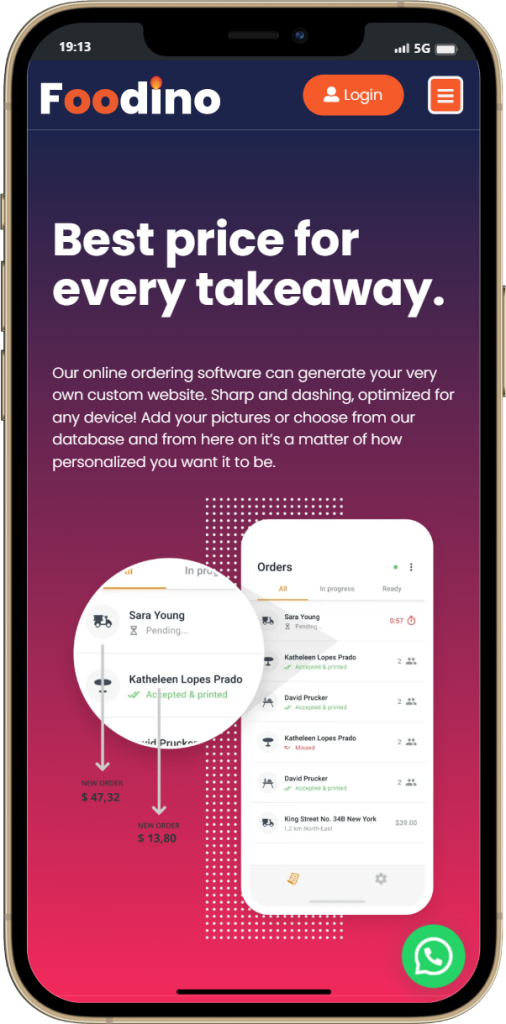In today’s digital era, the importance of having a mobile-friendly website cannot be overstated. Whether it’s mobile-friendly, mobile-optimized, or responsive, these design approaches play a pivotal role in enhancing your online presence and business success.
Understanding the Differences Between Mobile-Friendly and Responsive Web design
Before we delve into the reasons why mobile-friendly web design is essential, let’s clarify the distinctions between mobile-friendly, mobile-optimized, and responsive designs.
- A mobile-friendly site is loosely adapted to a mobile device, ensuring basic functionality.
- A mobile-optimized site goes the extra mile to provide mobile users with easy access to information and an improved experience.
- Responsive design takes adaptability to the next level by seamlessly adjusting to various devices and screen sizes, catering to both desktop and mobile users.
13 Compelling Reasons Why Mobile-Friendly Website Design Matters:
1. User Experience: The majority of internet users now access websites through mobile devices like smartphones and tablets. If your website isn’t optimized for mobile, visitors will have a frustrating experience. They may struggle to navigate, zoom in and out, or encounter slow loading times. A mobile-friendly design ensures that users can easily access and interact with your site, leading to a positive user experience.
2. Google Ranking: Search engines, especially Google, prioritize mobile-friendly websites in their search results. Google uses mobile-first indexing, meaning it primarily considers your site’s mobile version when ranking it in search results. A mobile-friendly site can lead to higher search engine rankings, improving your visibility and attracting more organic traffic.
3. Increased Reach: A mobile-friendly website allows you to reach a broader audience. People are more likely to discover and visit your site while on the go or during their daily activities. By catering to mobile users, you tap into a larger potential customer base.
4. Reduced Bounce Rate: If users encounter difficulties on your site, they are more likely to leave quickly. A non-mobile-friendly site often results in a high bounce rate, which can harm your website’s performance. A mobile-responsive design keeps visitors engaged and encourages them to explore your content.
5. Competitive Advantage: Many of your competitors are likely to have mobile-friendly websites. By having one as well, you stay competitive in your industry. Users are more likely to choose a business with a mobile-friendly site over one that doesn’t offer a seamless mobile experience.
6. Improved Conversions: Mobile users often have different needs and behaviors compared to desktop users. A well-optimized mobile site can lead to higher conversion rates, whether it’s making a purchase, signing up for a newsletter, or contacting your business. It’s all about making it easy for mobile visitors to take the desired actions.
7. Brand Credibility: A mobile-friendly website demonstrates that your business is modern, professional, and cares about its online audience. It builds trust with potential customers, as they are more likely to view your brand positively.
8. Accessibility Compliance: Ensuring your website is mobile-friendly also aligns with web accessibility standards, making your content more inclusive. It accommodates users with disabilities who rely on mobile devices, screen readers, or specialized assistive technologies to navigate the web.
9. Cost-Efficiency: A mobile-friendly approach saves you money in the long run. Instead of building separate websites for mobile and desktop, a responsive design adapts your existing content to various devices, reducing development and maintenance costs.
10. Future-Proofing: As new mobile devices with varying screen sizes and capabilities emerge, responsive design future-proofs your website. You won’t need constant updates to cater to the latest gadgets, ensuring your site remains relevant.
11. Social Media Integration: With the majority of social media usage happening on mobile devices, a mobile-friendly website seamlessly integrates with your social media marketing efforts, driving more traffic and engagement.
12. Enhanced Analytics: Mobile-friendly designs often come with better tracking and analytics tools. These insights help you understand user behavior and make data-driven improvements to your site’s performance.
13. Global Reach: Mobile devices are prevalent worldwide, making mobile-friendliness essential for reaching a global audience. It’s especially critical for businesses targeting international markets.
In conclusion, embracing mobile-friendly web design is a multifaceted strategy that transcends mere adaptability. It enhances user experiences, elevates your search engine visibility, and ensures your website’s longevity and compliance with evolving standards. By investing in a mobile-friendly approach, you position your business for sustainable growth and a stronger digital presence.
Here is a more useful practice for making a mobile-friendly website.




